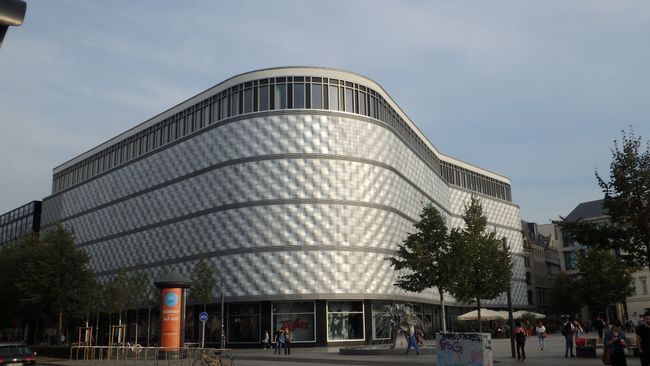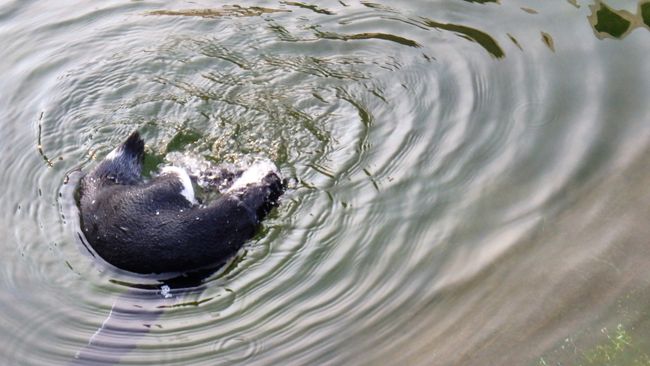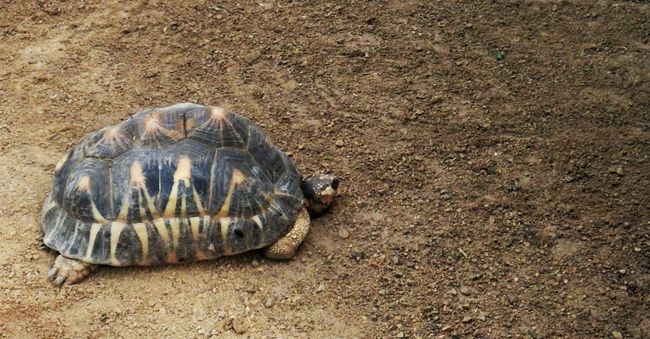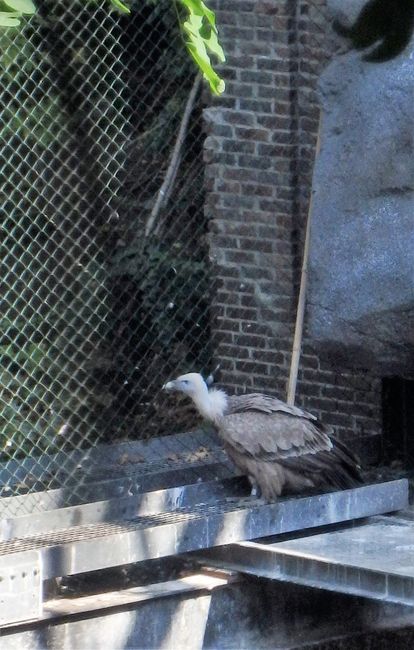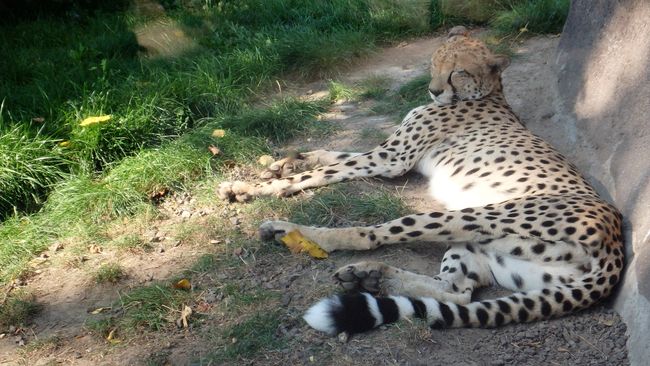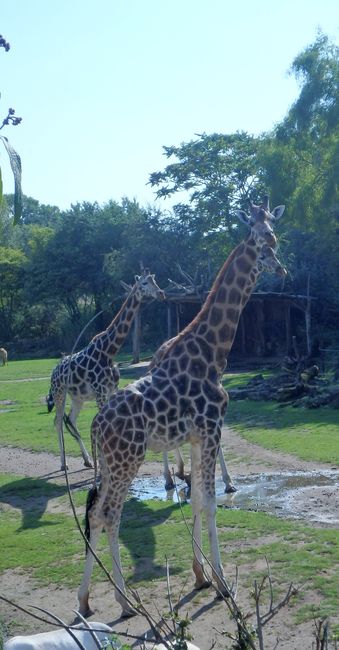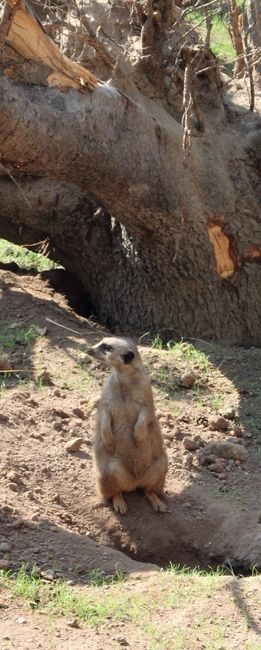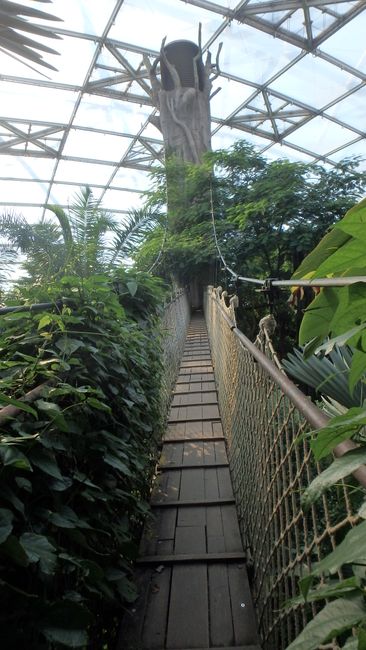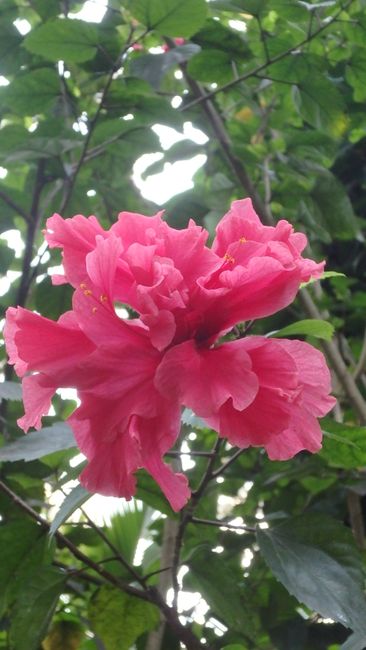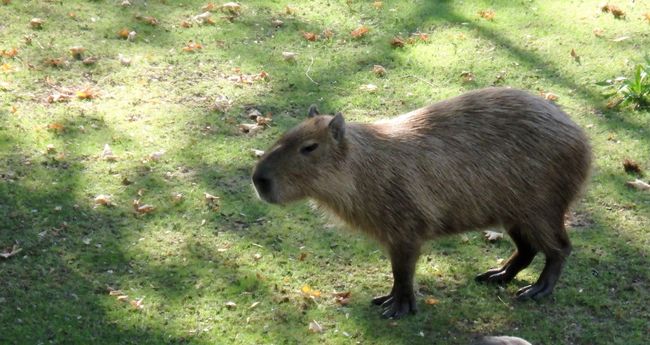3rd Day Leipzig Zoo (19.09.2018)
प्रकाशित: 19.09.2018
समाचार पत्रिका के लिए सदस्यता लें
'Morning has gold in its mouth' is a quote when you see the sun rise.
Today my exploration took me to Leipzig Zoo. Normally, I only know it from TV, but today I saw it right in front of my eyes.
My tip for you, when you go to a zoo, bring cash. EC cards are almost never accepted.
Once you've got your ticket, the first thing you'll see is the Penguin Enclosure.
These tuxedo wearers are not flyers, but they can reach an impressive speed underwater. They have some special features, such as their feathers. Every year, the penguins go through molting (feather change). During this time, they don't go in the water, otherwise they would sink like a heavy weight. Also, the black upper part of the tuxedo serves as camouflage. The deeper the penguin dives, the more it blends in with the surroundings. The white feathers are also for camouflage, namely: when the sun reflects on the surface of the water, the penguin is visible to its predators (seals).
A beautiful, but unfortunately endangered animal is the red panda. It is found in Asian regions and its reddish fur is how it got its name.
I can't remember all the animals from memory, so please excuse me. I'll try to mention the animals that stuck with me.
Koi fish are beautiful. In most cases, they are tame and you can touch them. Their scales are flat and even feel quite flat.
I believe Koi fish are considered good luck in Japan. Please correct me if I'm wrong.
If you know "Finding Nemo," you'll have fun. Clownfish, also known as anemonefish, are well adapted to their environment with their orange-black-white coloration and can hide from predators in the protection of anemones. Additionally, they lay their eggs in the anemones and stay there until they hatch.
Slow but quite bitey land creatures are turtles. These animals can easily amputate your finger.
But there is a turtle species that possesses its own individuality. I'm talking about the radiated tortoise. These armored land creatures have white spots on top of their shells that radiate out like rays. Each turtle thus has its own "fingerprint".
Reptiles like snakes are not uncommon in Germany, but in warm Australia, venomous snakes like the cobra and viper are quite prevalent. The king cobra can spray its venom up to about 5 meters and blind its opponent or cause severe burns to humans. Of course, there are "harmless" snakes like the anaconda. It is a constrictor snake and it strangles its prey until it suffocates.
Caimans and alligators are quite bitey. These reptiles appear in large numbers in the swampy areas of the Amazon or Mississippi. It's best to keep your distance from them and leave them alone.
Beautiful savannah animals are cheetahs, lions, and giraffes. These animals are shown in their almost natural habitat on the large African enclosure. Giraffes are amazing "highly evolved" animals that mainly feed on leaves. Sometimes they eat dry grass and very rarely eat fruit. Giraffes are ruminants, like our dairy cows. That means they have multiple stomachs where they digest their food in several steps.
Literally: eat, regurgitate, digest *grins*
In an old homeland film, there is a girl who is left alone in the mountains and only a bird remains as a faithful companion. I'm talking about the vulture. This majestic bird of prey not only looks beautiful but can also be dangerous.
You can see this bird of prey in an aviary right in front of your eyes.
The homeland film is called "Die Geierwally," just for your information.
My personal highlight is Gondwanaland. Besides the tropical climate under the dome, there is a lot of information about tropical flora and fauna. The different tropical conditions of the continents are depicted there. There is a treetop walkway that brings the adventure closer with rope bridges á la Indiana Jones.
I recommend doing this treetop walkway only if you aren't afraid of vibrations and heights. Alternatively, you can also take a peaceful boat tour.
In addition to fish and reptiles, there are also tall, overgrown trees.
Lastly, and almost a challenge, I finally saw the big sisters/brothers of guinea pigs.
Capybara means water pig. These water and land animals are related to our domestic guinea pigs. They have small ears, scruffy fur, and noticeably longer legs than the little squeakers. Capybaras are native to Mexico.
One special feature of capybaras is that their teeth are yellow-orange in color. This is due to their "monotonous", vegetarian diet. They prefer vegetables and fruits.
Capybaras, like our domestic guinea pigs, are social animals.
In conclusion, Leipzig Zoo is a zoo that can provide a lot of information about different species of animals. Furthermore, this zoo is also very committed to the protection and preservation of animal species. They support breeding and reintroduction projects that are of great importance to every country in the world.
समाचार पत्रिका के लिए सदस्यता लें
उत्तर

